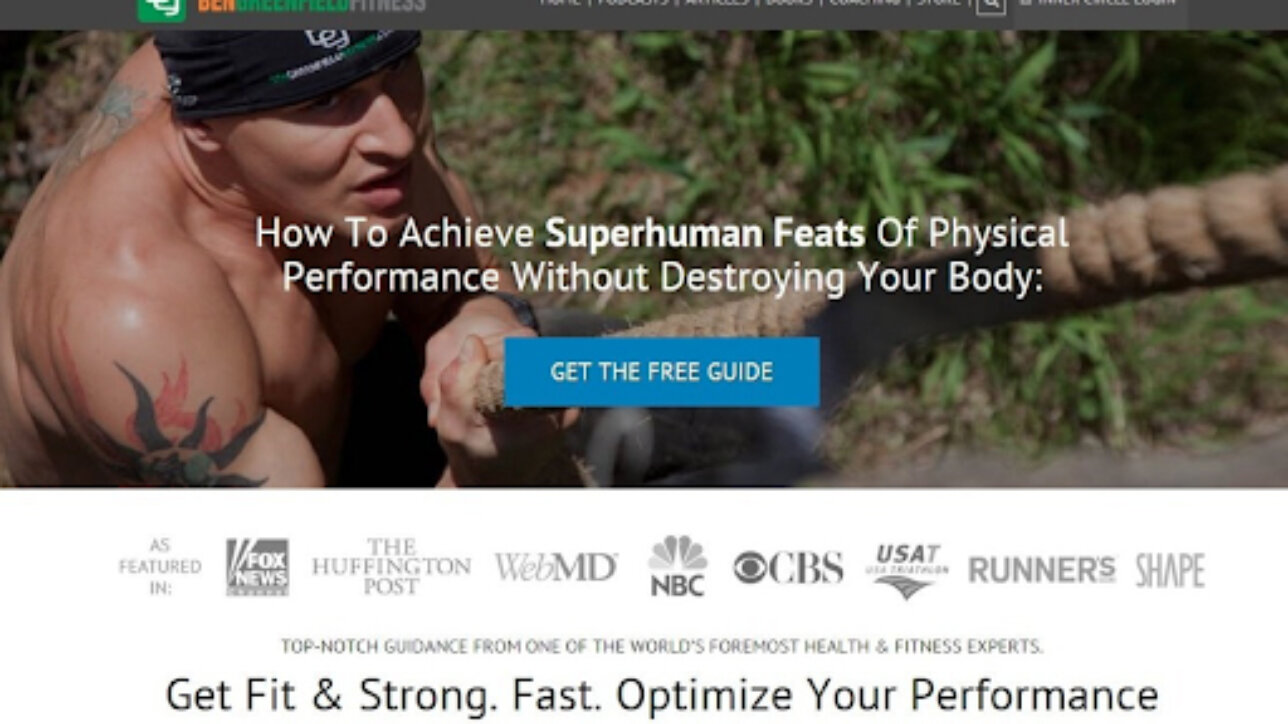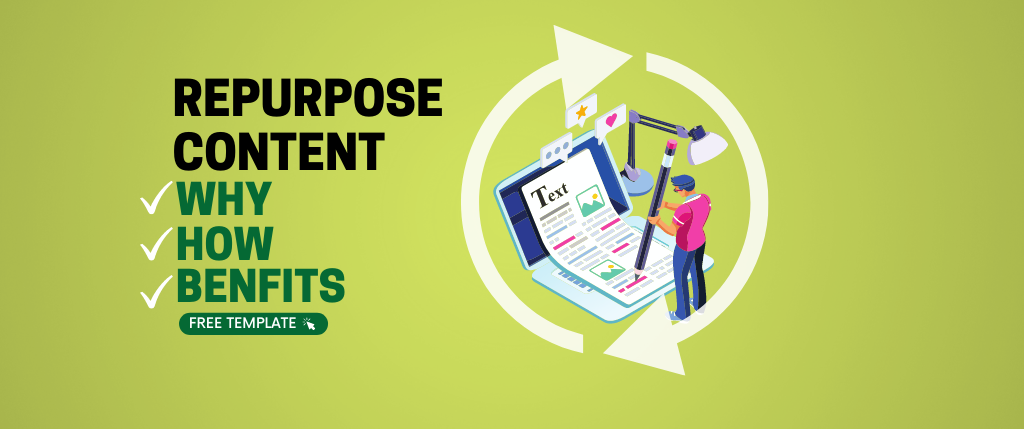As a consumer, have you ever been in a position where you didn’t really ‘need’ a product, but after it is pitched to you – you now have a feeling of ‘want’ for it?
Have you ever wondered how does that happen?
Sales & Marketing depends on the human psyche as that plays a greater role besides other basic marketing factors.
The business people involved in the decision making process of their brand are people too; and the best way to get hold of them is through emotions!
In fact, a Harvard psychologist says that 95% of our purchasing decisions are made subconsciously.
Let’s dive into some of the basic principles of Marketing Psychology that will enhance your business:
1. ‘Don’t judge a book by its cover’- just a phrase, not into practice.
Although we restrain ourselves from judging our environment. Are we always successful in doing so?
What’s the first thought that comes to your mind when you see a woman on the driving seat?
Yes, that she would be a terrible driver and prone to accidents. Little did you know, she might be a better and safer driver than most men; yet in the first look, we have some sort of prejudice and judgements in mind.
How do we relate this to marketing?
All the businesses that come to you tend to form judgements, and you have to give them a positive experience!
How do we do it?
Website design include testing the Ux|Ui in a variety of situations and scenarios. Using the Golden Ratio in Web Design gives you an in-depth idea about the appropriate font size, proportions, column widths, margins and line heights.
Colors also play a role in attractiveness. and has been found to affect the human psyche.
e.g.- Red stands for Power and Anger.
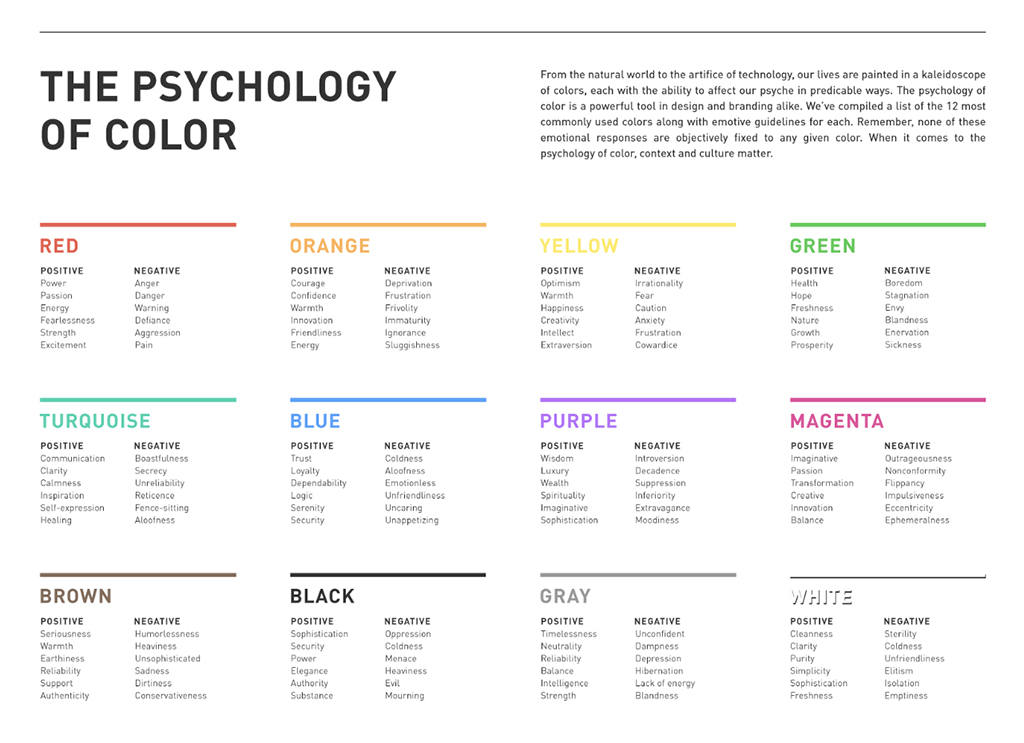
Source: http://www.ignytebrands.com
There are positive and negative moods for every color. If used in proper proportion, your website appeals to your customer/ audience.
According to Satyendra Singh’s review on color psychology in relation to marketing, people make up their minds about a product within 90 seconds and 62%-90% of that decision is based on color alone.
Colors are a powerful ally to marketers but there is no clear cut answer as to what the best color is for conversions.
One button color might outperform another purely because it contrasts more with the other page elements and not because of the color itself. This is known as the Von Restorff effect which means that if it stands out, it’s given the most attention and is remembered easily.
Tip: Test and optimize designs a few times, to discover the right size and color.
2. Reciprocity
Every time someone does good for us, we try to reciprocate by doing something nice for them in return. There is no such rule, but subconsciously, we are bound to it whether it is our personal, professional or consumer life.
e.g:- In a study by Cialdini, when servants bring the bill without a mint, the diners will tip according to their perceptions of the service given. With one mint, the tip jumps up 3.3%.
Two mints?
And the tip jumps “through the roof” to roughly 20%.
How do we relate this to marketing?
When businesses send a small gift that need not be expensive, or a voucher of discount, the consumers/businesses would be bound to stay loyal to you in return.
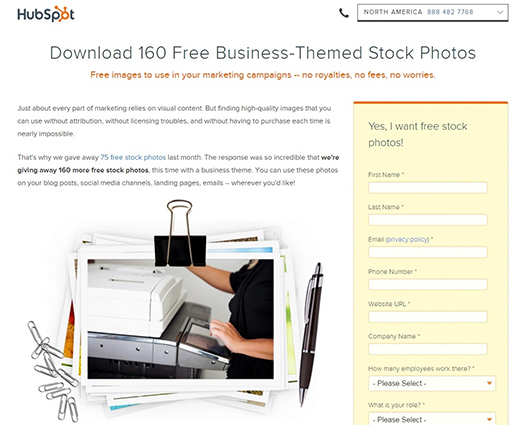
A simple e-book can also help in reciprocity.
e.g.- Hubspot gives away free business stock images in return for some key information and contact details of the consumer.
Source: https://feinternational.com
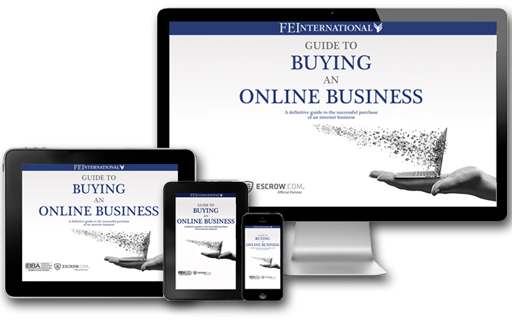
Another example is of FE International that gave a very detailed 83-page guide to buying an online business. It creates good will, acts as a lead generation tool for potential buyers and also helps educate the market.
Source: https://feinternational.com
Expected Rewards v/s Surprise Rewards
In an experiment with children to explore how motivators influenced children while drawing, they were categorized into 3 groups:
- a) Expected Rewards
- b) No Rewards
- c) Surprise rewardsIt was discovered the children who expect a reward demonstrated a decreased interest in drawing during the experiment, while the children who experienced unexpected rewards actually increased drawing of their own accord.
How do we relate this to marketing?
Providing customers with surprise deals or promotions will increase the likelihood of a purchase. If a company advertises the same deals or promotions all the time, it loses its psychological appeal.
It is perceived as nothing special. However, when a potential customer is offered a deal or promotion as a surprise benefit of the purchase, it creates a sense of “I’m getting something special,” and increases the customer’s desire to buy again.
3. The Foot-In-The-Door Technique.
This technique refers to the concept of ‘a small yes can lead to a big yes!’.
This theory is valuable in B2B sales. A company may create more B2B customers by offering a less expensive product or service, or by offering a trial for a product or service for a short period.
A relationship and trust is established during the small request. Therefore, a company is more likely to say yes to a bigger investment if they have already said yes to a smaller one previously.
e.g.- The 30-days trial software.
If you got your customer to agree to take the trial (small yes), there is a high possibility they might comply to bigger requests too.
Remember-Don’t be quite pushy for a sale.
Marketing is also about long-term relationships. If you start small, the company is likely to comply to your further bigger requests!
The foot-in-the-door technique plays a big role in building stronger trust and loyalty.
4. The Door-In-The-Face Technique.
This is quite the opposite of foot-in-the-door technique. Here, a bigger request is made first which is likely to be denied; then a smaller request is made (the target) which is likely to be accepted.
e.g.- offer your clients to purchase a bigger package, once they deny it, you ask your clients to at least hit the subscription button, which is a smaller and more reasonable request that the clients are likely to agree upon.
5. Create Scarcity and Urgency.
One of the ways to catch your customers attention is by creating a scarcity of the product, which in turn creates a sense of urgency.
Demand and supply plays a crucial role in B2B marketing. When an offer is limited and not easily accessible, the consumer is likely to act faster upon making a deal.
e.g.- We only have the capacity to take 2-3 more clients this month. Hurry up!
Tip–If you approach the scarcity concept as if there was a ton of a product or service, but due to popular demand there’s a few left, people will be more receptive.
On the other hand, if you approach it from the angle that there are only a few products total, so get it now, this principle won’t be as effective.
6. Reduce Options.
“Umm, this is confusing. I’ll need some more time to think” – all your efforts of creating urgency go for a toss.
Does this really happen?
In a study by Sheena Iyengar, shoppers were offered a free sample of jam.
One day there were 24 flavors to choose from and on the other day 6.
With more flavors, 20% more people stopped to take a sample. However, only 3% of those people made a purchase. When only 6 different jams were on offer, 30% of people made a purchase after trying a sample!
That’s a huge difference!
How do we use this in B2B Marketing?
If fewer options really attract more conversion, one way would be to test it by having fewer menus in the drop-downs on the form. Maybe, fewer options could also make your website easier to navigate and more approachable.
7. The Decoy Effect.
The decoy effect is when an unnecessary option is added to “direct” the customer to choose the expensive option.
e.g.- In an experiment by Prof. Dan Arieley with MIT students, they were divided into two groups, and each group was given options of subscriptions:
| Group A | Group B |
| Web Subscription : 59$ | Web Subscription : 59$ |
| Print Subscription : 125$ | |
| Web + Print Subscription : 125$ | Web + Print Subscription : 125$ |
The better deal is ‘web and print subscription’, right?
Whereas in Group B, the ‘print subscription’ option was removed, while displaying only the web subscription and the combined subscription of the two.
Results-
| Group A | Group B |
| Web subscription: $59 (16 chose) | Web subscription: $59 (68 chose) |
| Print Subscription: $125 (0 chose) | |
| Web and Print Subscription: $125 (84 chose) | Web and Print Subscription: $125 (32 chose) |
| Total revenue: $11,444 | Total revenue: $8,012 |
Group B has 30% decrease in the total revenue.
8. Social Proof- Hopping into the Bandwagon.
Customers are likely to be more attracted to an idea when it is done by a lot of people in the similar field/someone you adore. We have all been the victims of the Bandwagon effect at least once in a lifetime, when we want to be “a part of the crowd” and follow the lead. In other words, we begin to trust a thing when it is adopted by plenty of others. This is usually how ‘trends’ begin.
e.g.- How many times have you watched a YouTube video just because it has a large number of views?
https://buffer.com/resources/marketing-psychology#3
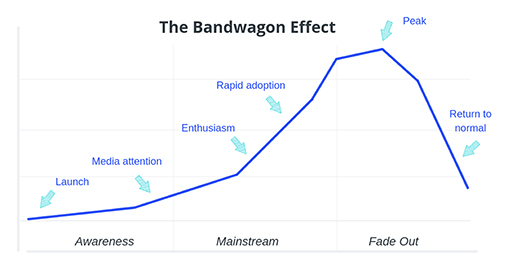
Source: https://buffer.com/resources
How do we relate this to marketing?
A study by Harvard Michael Luca found that an increase in a single star on Yelp can boost a local business up to 9%.
- Using real testimonials and reviews by businesses on your page could work on your side. Video testimonials work even better!
e.g.- FE International
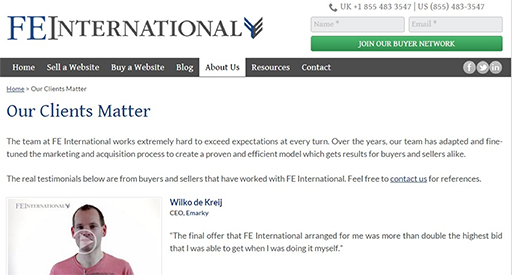
Source: https://feinternational.com
- Mentioning media coverage can also build trust and credibility on your website.
e.g.- Ben Green Fields
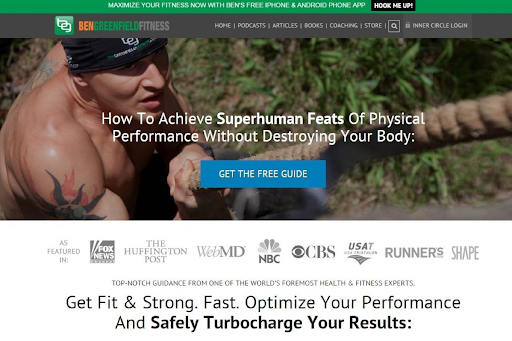
Source: https://feinternational.com
- Do not forget to mention awards, ratings and social proof. Many a times, people tend to see the number of shares; higher the number, the higher the possibility of him sharing it too.
e.g.- Entrepreneur.com
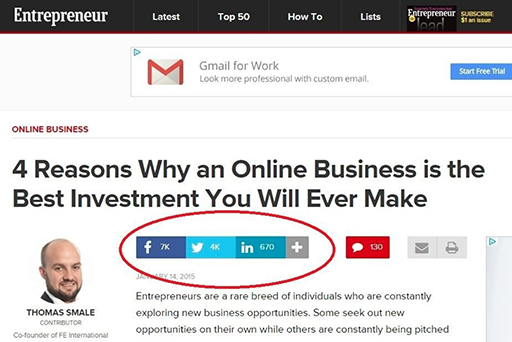
Source: https://feinternational.com
9. Anchoring.
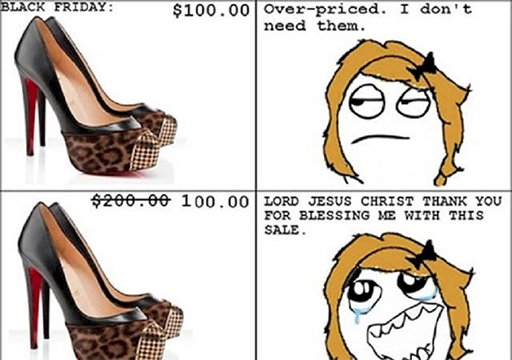
Source: https://www.memecenter.com/
We all must have come across this meme and had a good laugh.
In reality, most of us do use this technique.
Remember that every time you have a sale or put up a combined offer, you mention the original (old) price and the new price, to make them calculate the percentage they’ll be saving!
Many a times, when businesses are new in the field and aren’t much knowledgeable about the pricing, the first price they come across becomes an anchor, and their future dealings would revolve around that price.
How do we relate this to marketing?
When you have a client on the phone call, you could give a relatively higher price (not absurdly high). Now this price acts like an anchor and even after a good bargain, you can expect the same profit in your hand.
Caution- don’t underestimate your client’s knowledge. You surely don’t want to risk a new client!
10. The Baader-Meinhof Phenomenon.
As a consumer, have you ever heard of a product and then came across it EVERYWHERE you go; as though its illusion is following you. This is nothing but the Baader-Meinhof phenomenon.
When a selective attention is thrown at something, you unconsciously start to looking for it everywhere you go, and then the ‘confirmation bias’ hits you that this is a proof that it’s time for you too, to buy the product.
Psychology also says that people tend to buy products that they’re more familiar with. The more you familiarize your brand, a sense of trust builds in the consumers.
How do we relate this to marketing?
This phenomenon is a proof why nurturing is important. Once someone starts noticing your brand (aka clicking around on your website), you’ll want to help them start seeing you “everywhere.”
Send them targeted nurture emails and retarget them with ads based on their behavior, and you can increase the possibility of them converting.
But also remember that repetition is only effective when people aren’t giving full attention. A study found that repetitive messages increased the persuasiveness of an argument (even a weak argument) but only when low involvement processing occurred.
When your message enters your consumer’s full conscious awareness, your argument must be remarkably compelling because addition repetition will diminish the strength of an argument and become pestering.
11. Loss Aversion.
Of all the noodle brands that exist in India, Maggi hits the sales bar more than any other brand. Why is this so? The answer is not in the varying taste or price; it is because people do not prefer change. This is also related to status quo bias that says ‘what is, is good’.
People tend to cling to what they have and resist change even if the other thing is better. In fact, there are times when they pay even more to keep what they have.
e.g.-
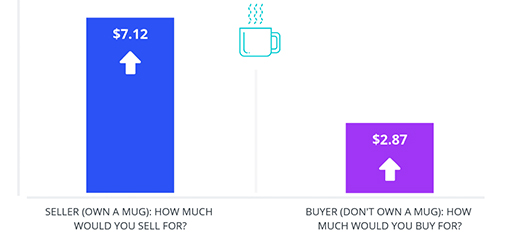
Source: https://buffer.com/resources/
You see? The value of a simple mug is so high for its owner.
How do we relate this to marketing?
This can be closely related to brand loyalty. Once people have gained a sense of ownership, they don’t wish to lose it.
Free coupons, free trials, etc. can be an act of loss aversion.
e.g.- Buffer offers 30-day free trial. once someone has spent the time importing their social media accounts and incorporating Buffer into their routine they are less likely to want to give up the ownership they feel over their account when the trial ends.
Another example would be of Uber’s first free rides, which made people sign up and give their details. After that, constant discount codes made sure people “use” their services.
12. Fitt’s Law
After using all of the above strategies successfully, the main challenge is of ‘retention’ and ‘call-to-action’.
Fitt’s Law is a model that concerns human movement. In online marketing, it means actions taken by the consumer via mouse. Page load speeds affect conversion rates and so does the time it takes to complete an action. Fitt’s Law has two components to prescribe how long it takes to move a mouse to a desired area:
· The distance to the target.
· The size of the target.
In other words, if you want to increase the number of sales or sign-ups, you have to make it visible i.e. increase the font/ button size.
In contrast, if you want to retain the client and prevent them from unsubscribing you, you use smaller fonts and make it difficult to locate.
e.g.- The Former President- Barrack Obama’s email campaign.

Source: https://feinternational.com
In conclusion
You’re all set to boost your business by trying out these strategies; you may use one, combine a few, or use all depending on the suitability of your business.
Although ‘no one way is the correct way’, testing, monitoring and optimizing will lead you to success.
Happy psyching Marketing!
